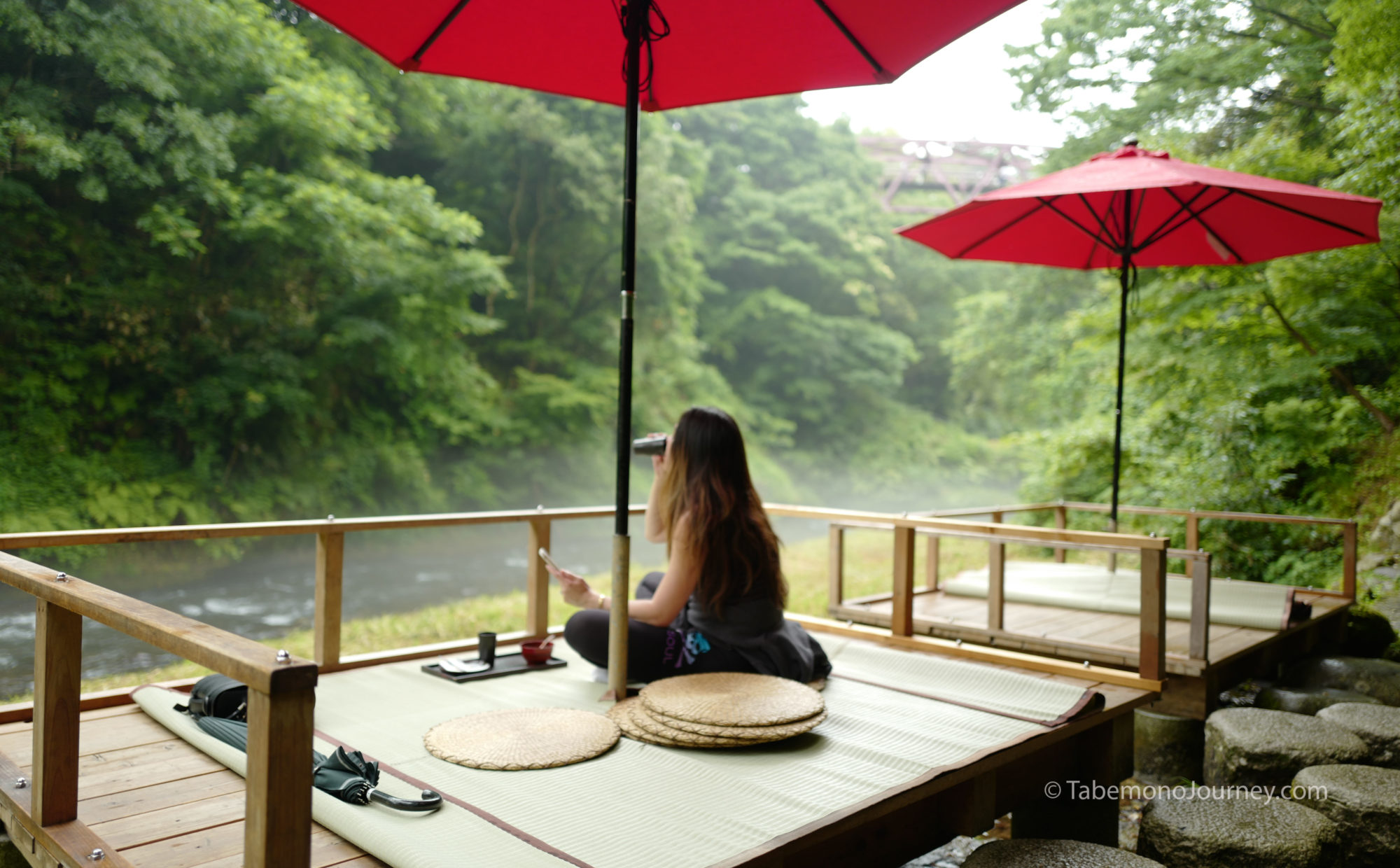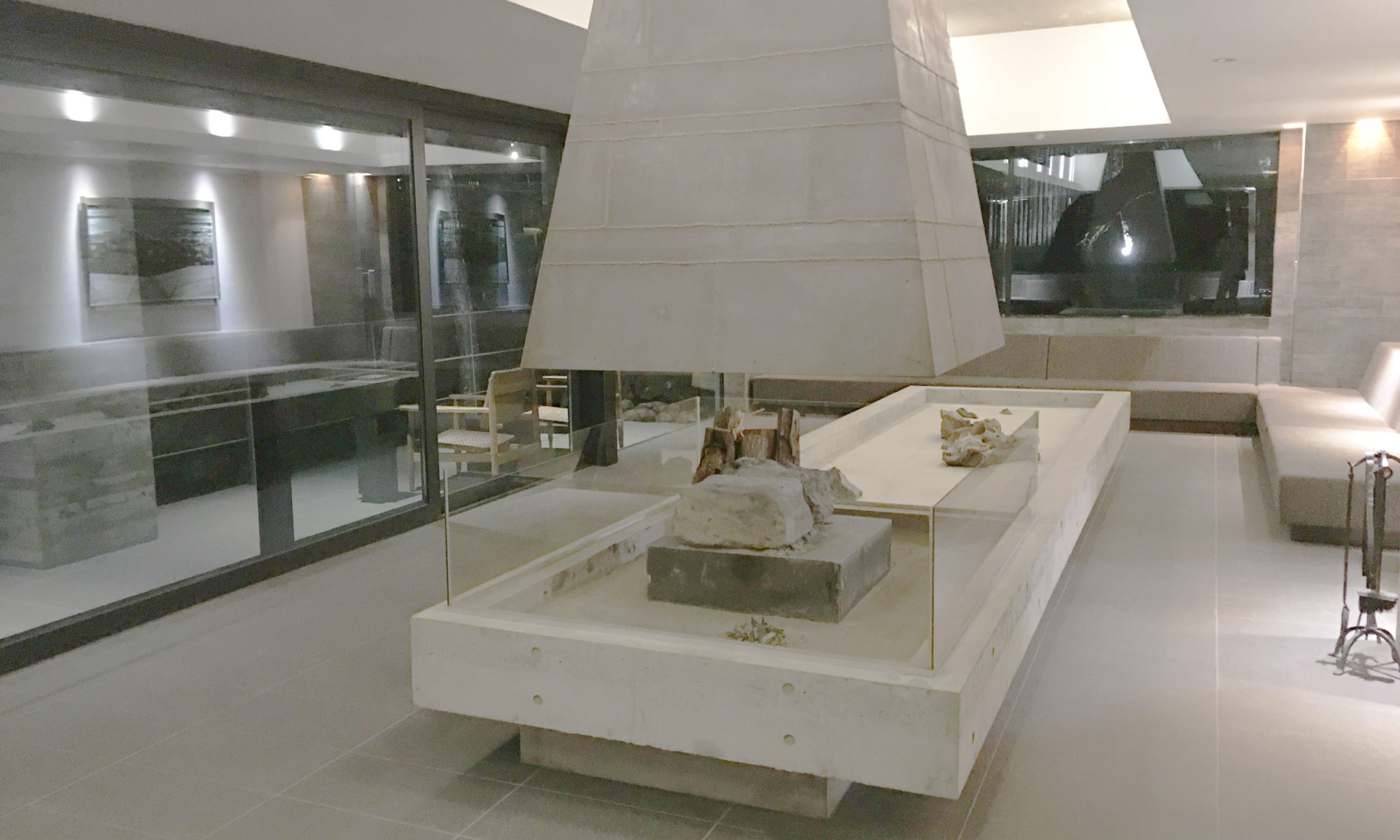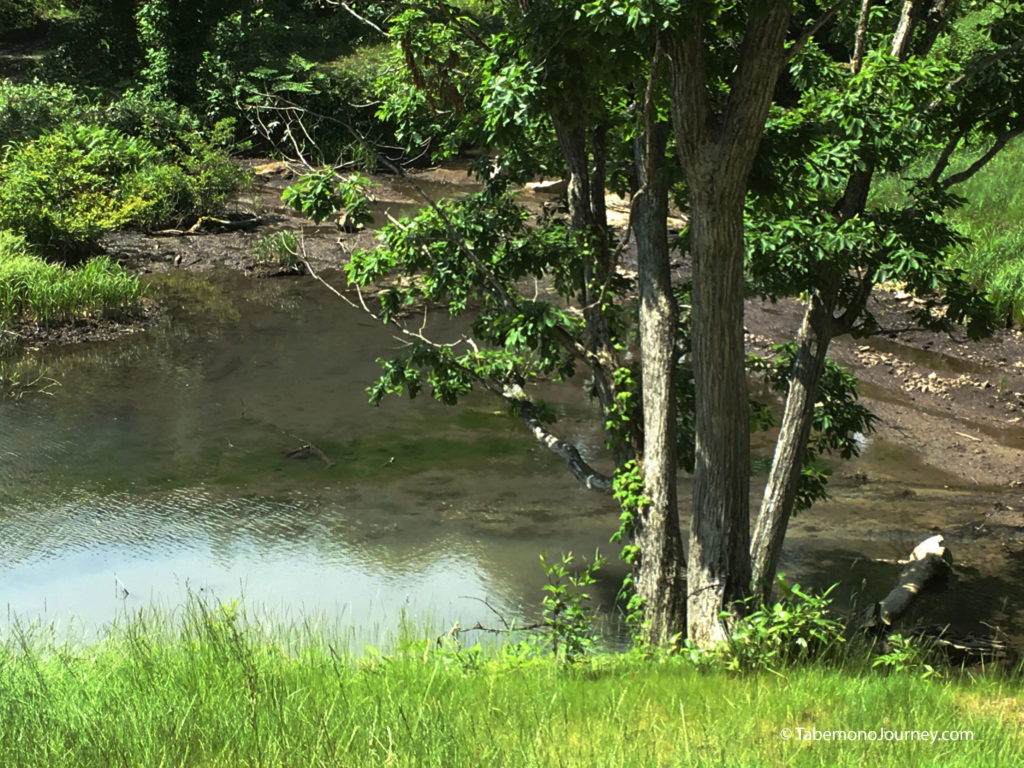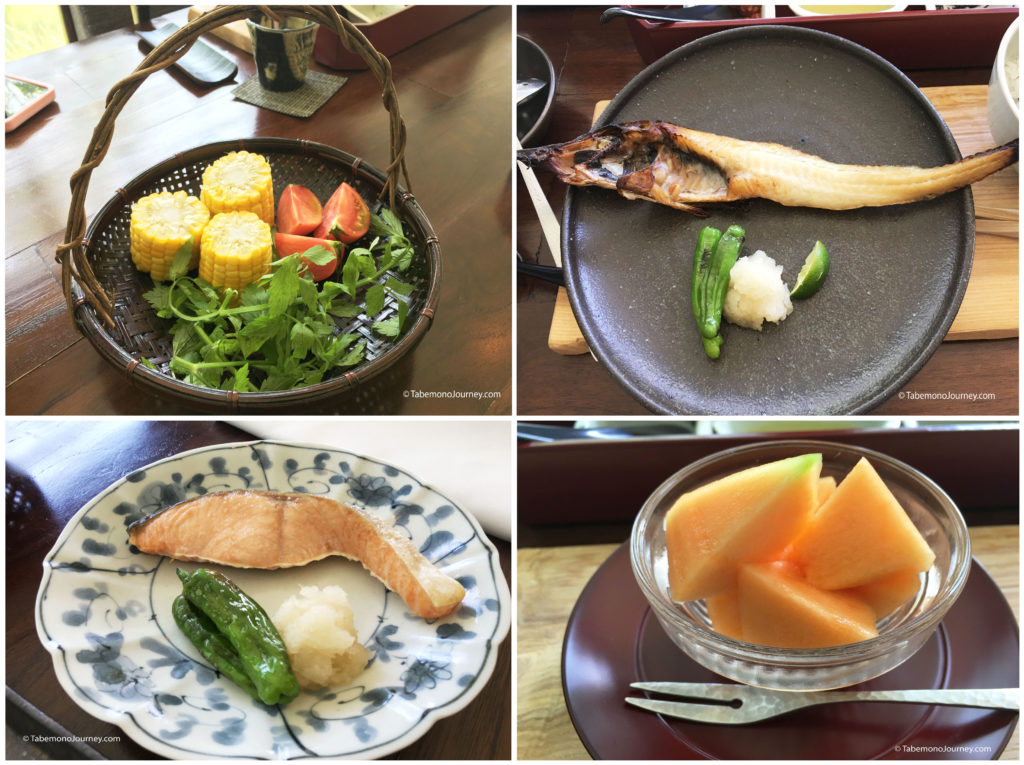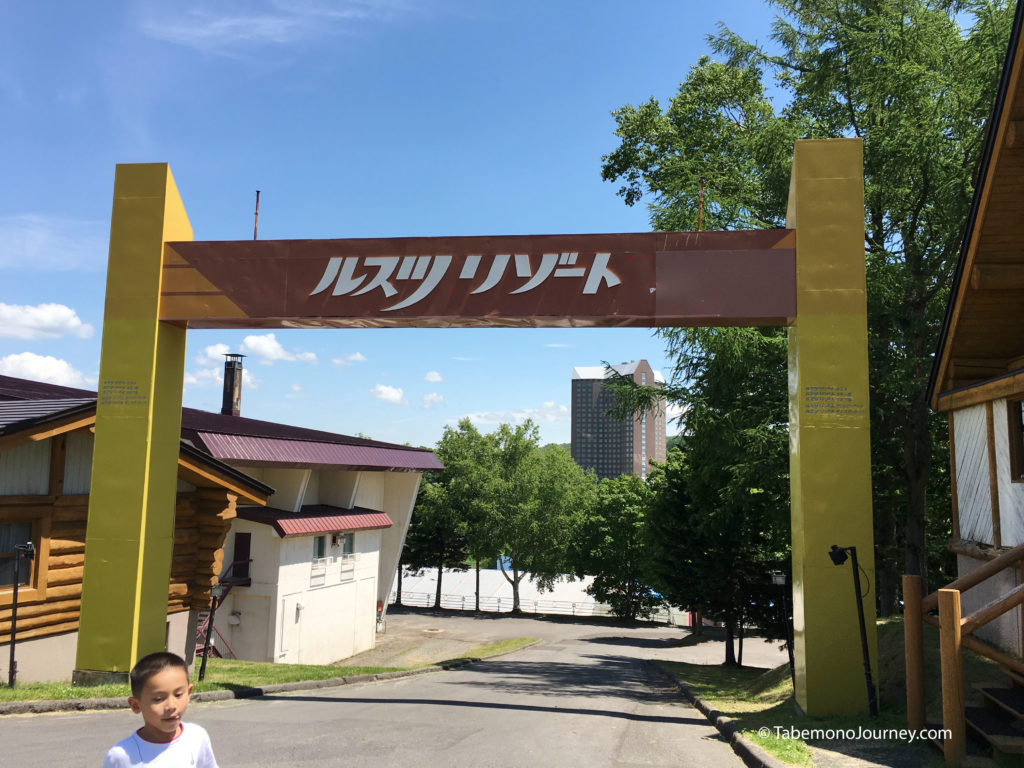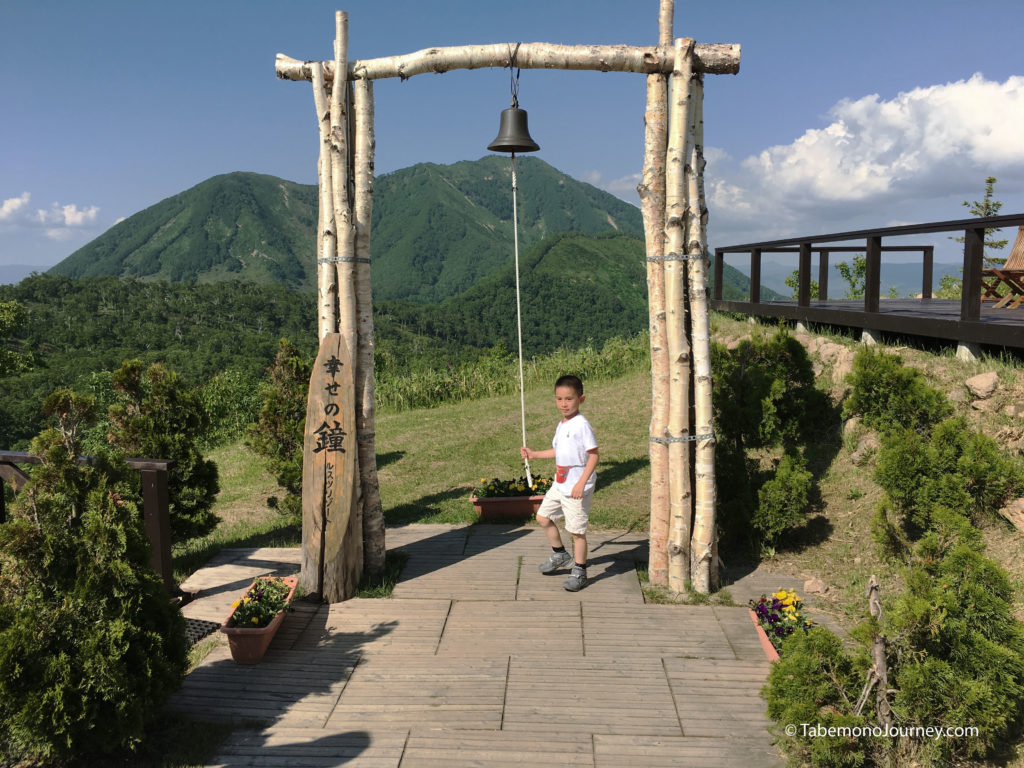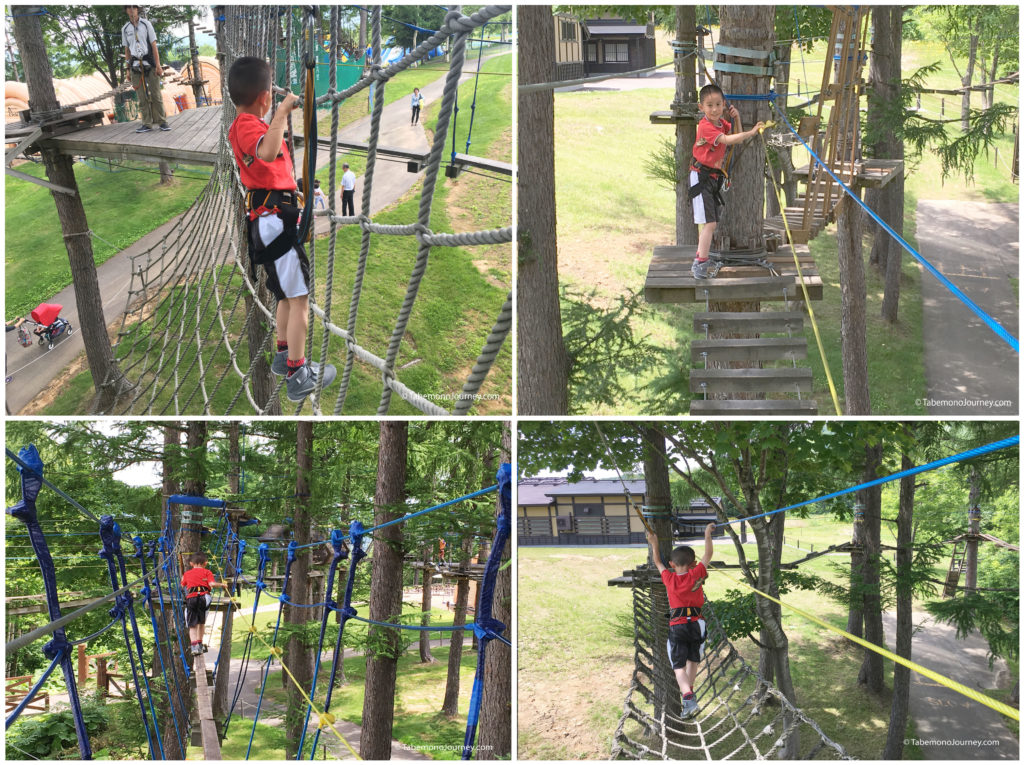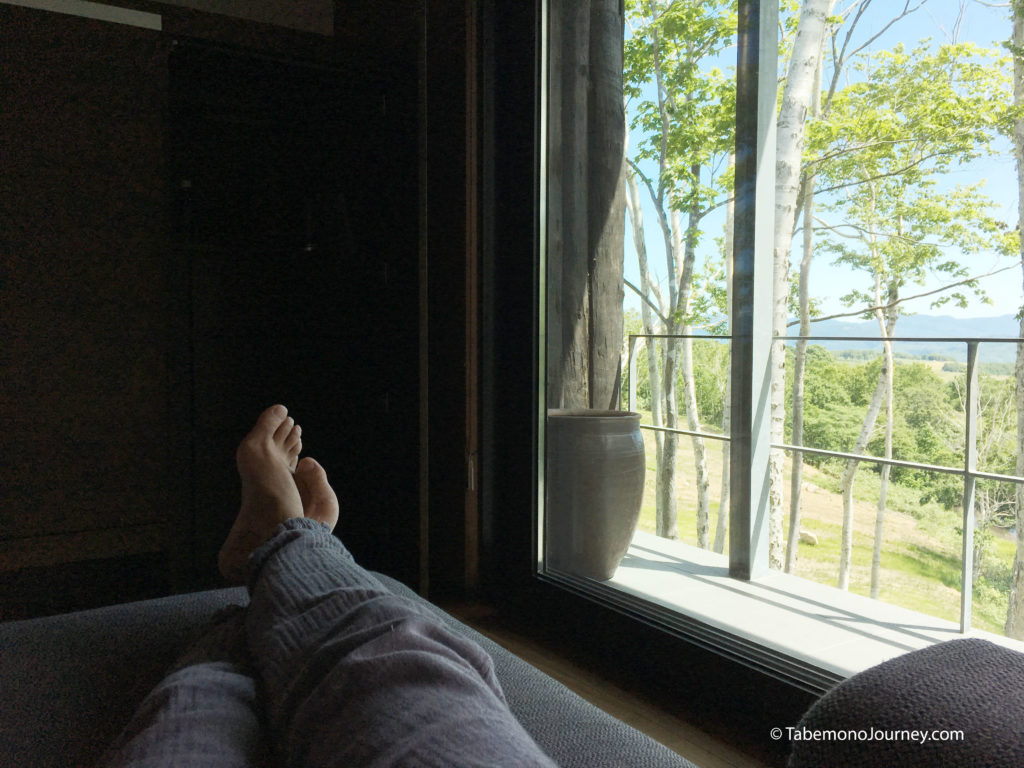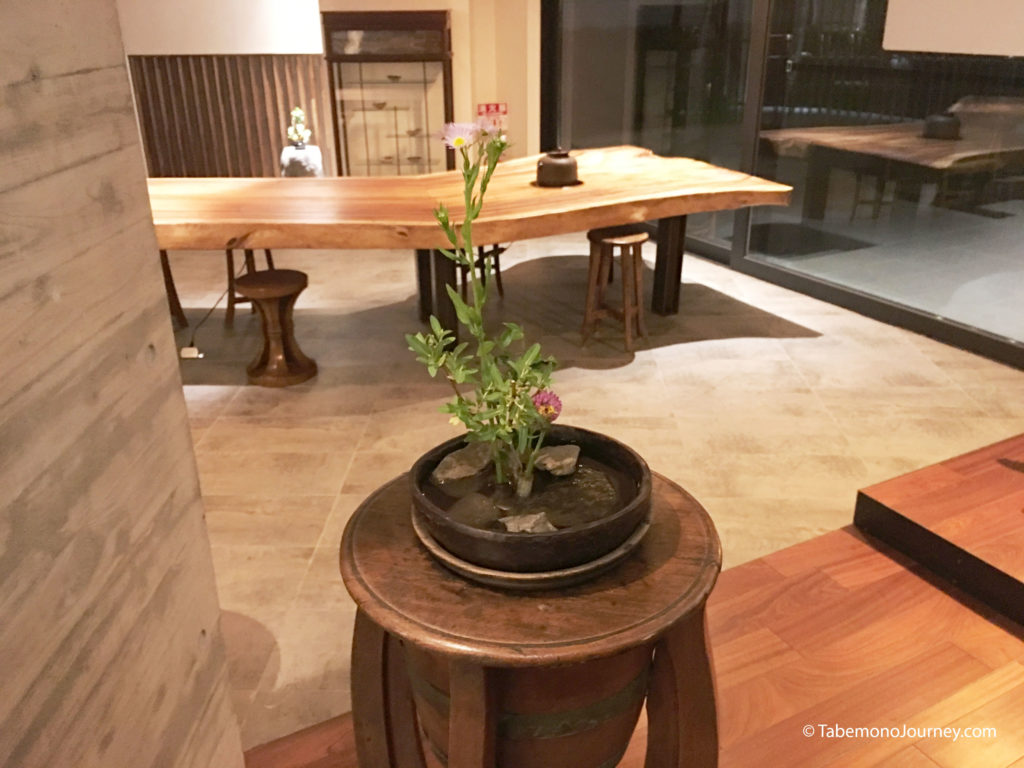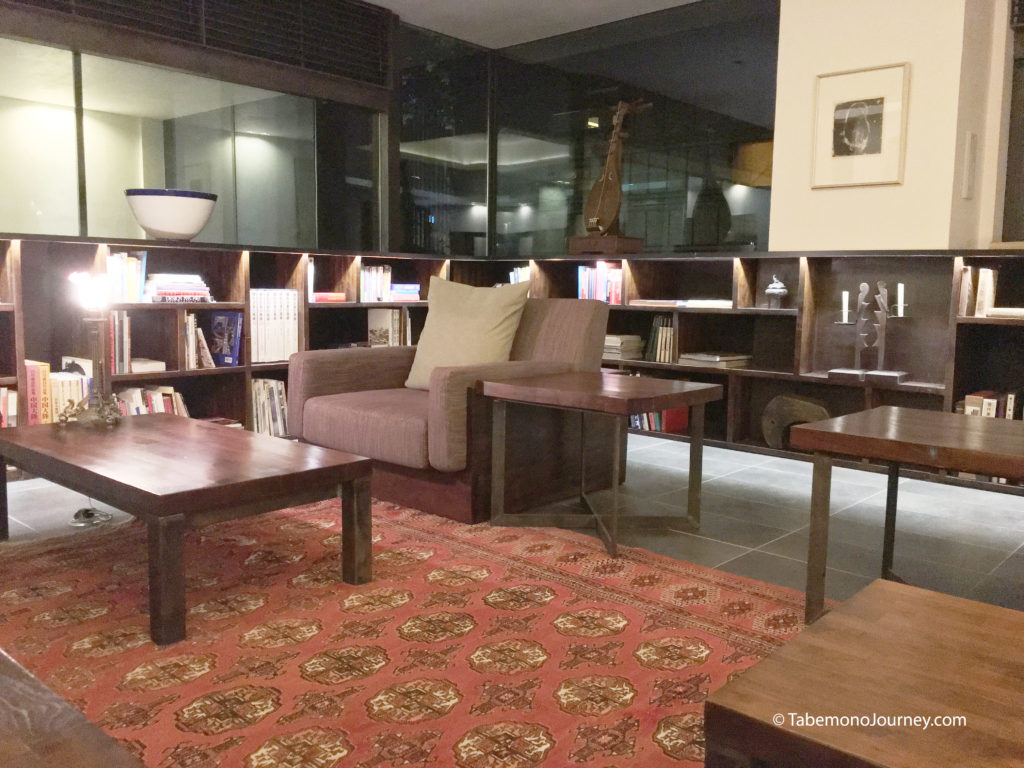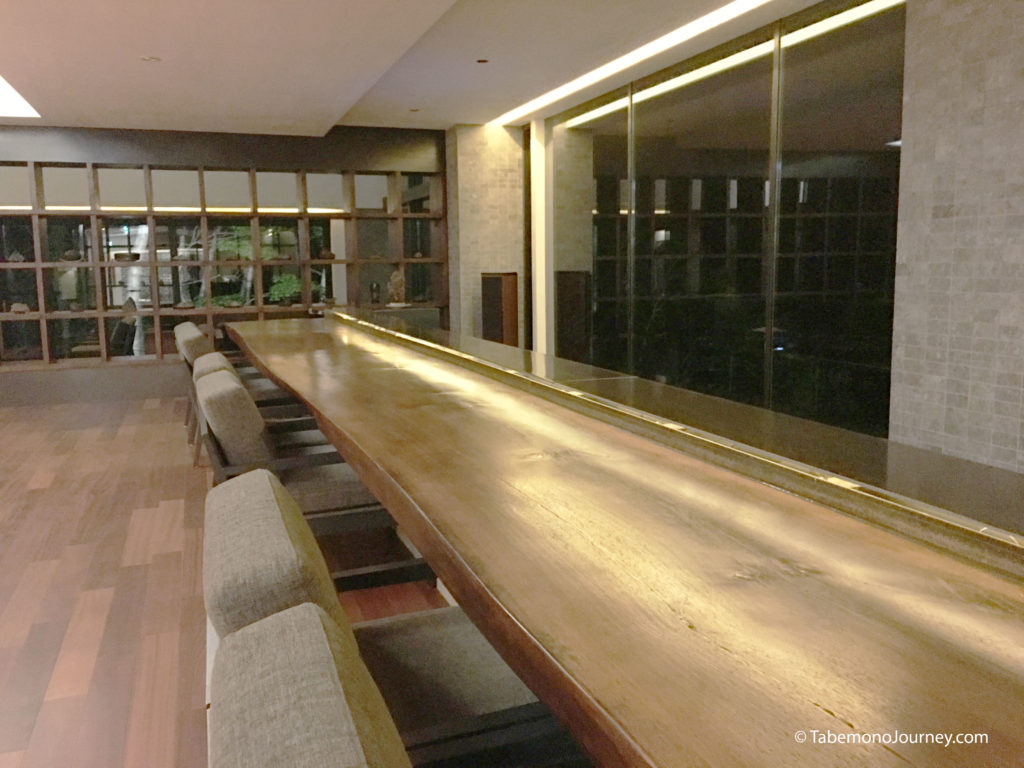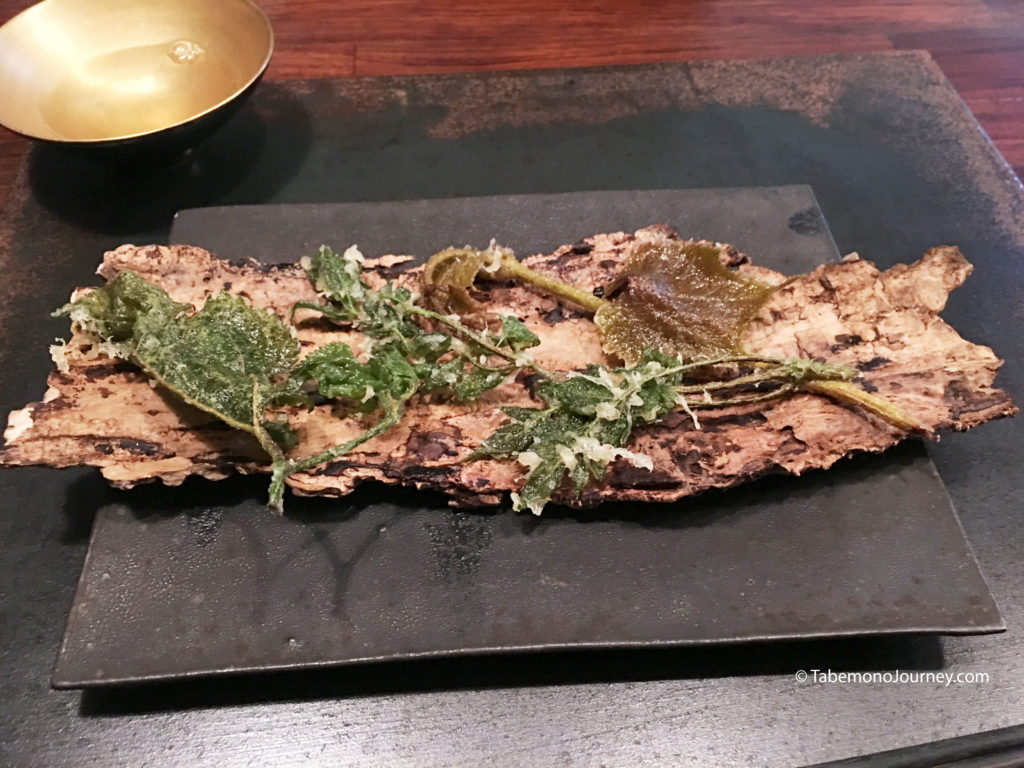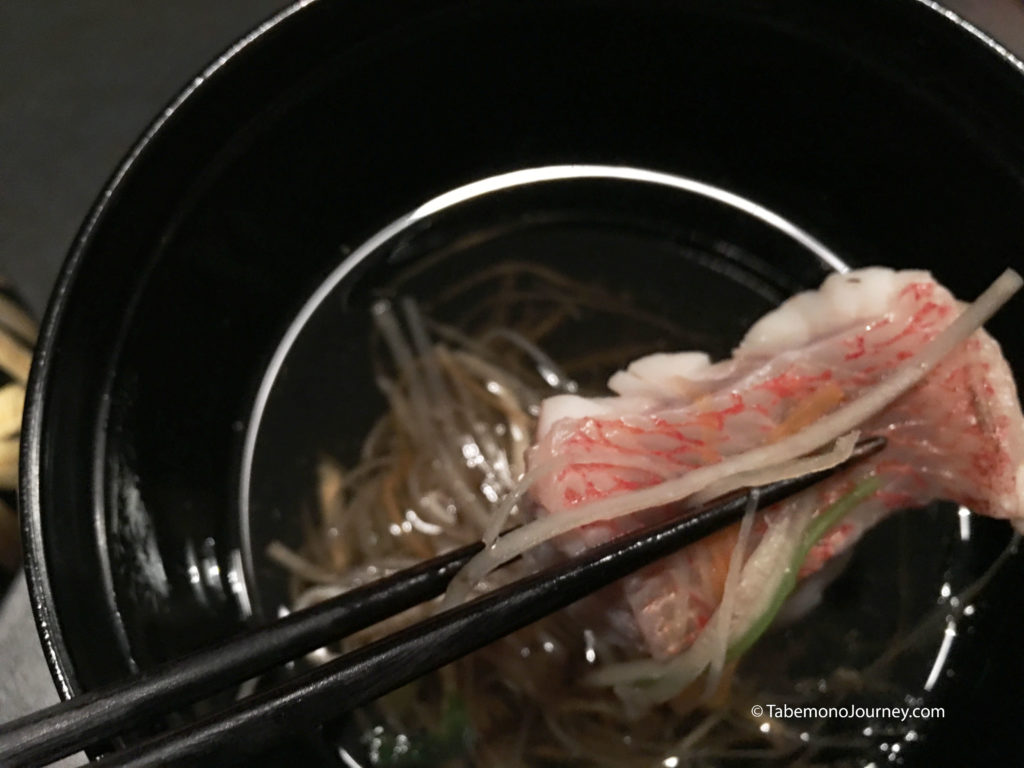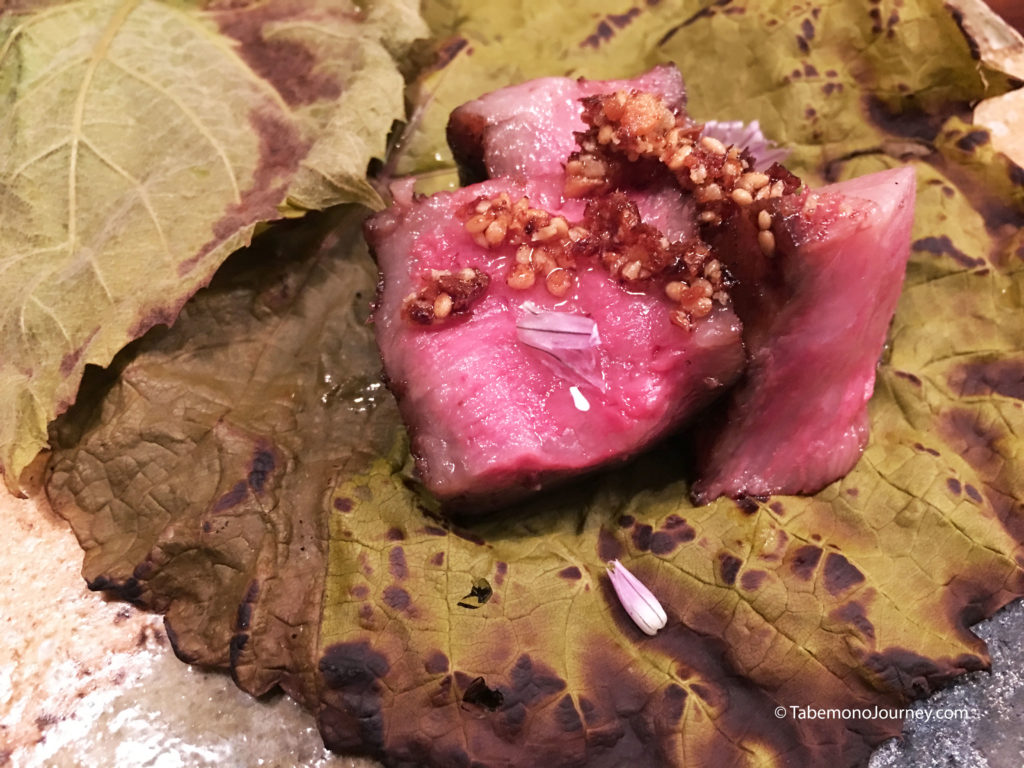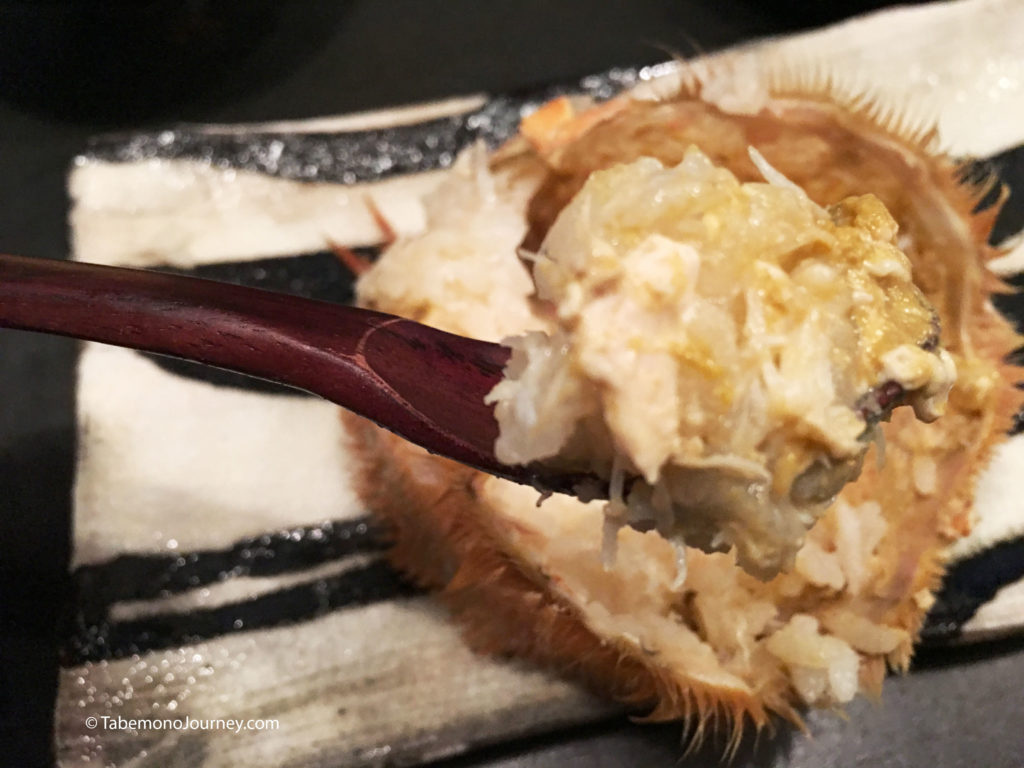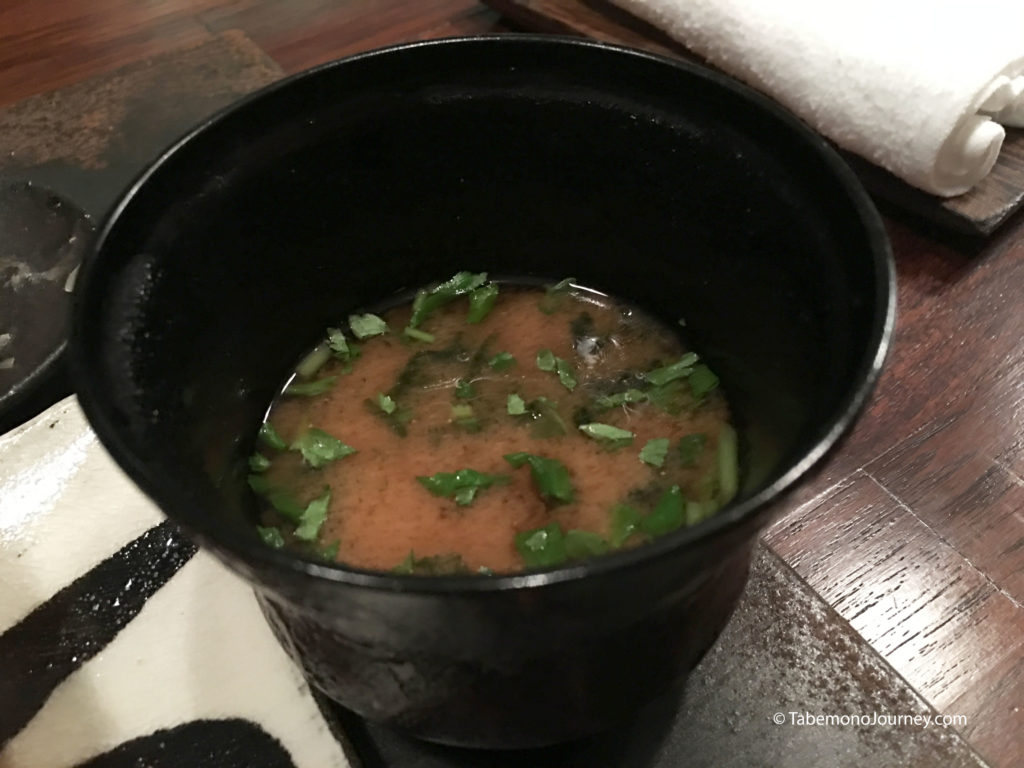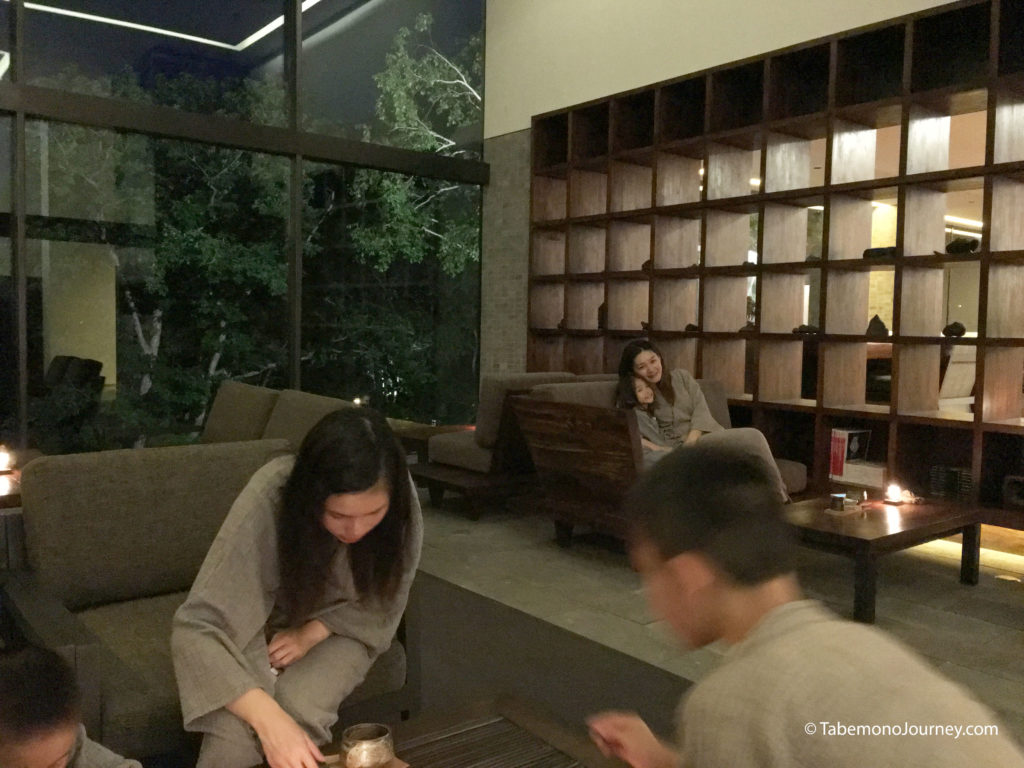After a restful and peaceful first night at Zaborin, you truly appreciate the brilliance that this contemporary, yet zen-like ryokan offers. While there were other guests staying at the same time as our stay, the ryokan is large and the feeling of luxury and exclusiveness permeated throughout our stay. As previously mentioned in the last post, Zaborin is nestled in a quiet forest in Hanazono of Niseko and the kanji characters for Zaborin (坐 忘 林) means “to sit and forget amongst the woods”, and it is a perfect description of our experience as we forgot about the troubles of the world and just enjoyed ourselves nestled in the white-birch forests.
Breakfast is once again served in the dining area in private rooms of the ryokan. In full sunlight, you can enjoy the views of the forest and we can see through the windows the meadow with local wildlife flocking as we enjoyed our breakfast.
Breakfast is elaborate take on the Japanese breakfast theme. Like his dinner, Chef Yoshihiro Seno’s talent of the locally harvested ingredients in a bountiful yet somehow light meal. Of particular note is my first time trying the grilled sail-fin poacher fish called hakkaku. It is long and thin, and the exterior looks armored and spiky, but the meat is soft, springy, and fatty with a light but pleasing flavor.
Niseko is a famous area during the winter for ski activities, but the summer months has many offerings for the adventurist. Cycling, kayaking, and hiking nature trails can all be arranged by the ryokan front desk. But having our four children with us, we planned our day-time activity with a couple of kid-friendly attractions.
First up is Rusutsu Resort which is about a 40 minute drive from Zaborin. A ski slope in the winter, but during the warmer months, their amusement park and golf courses open up.
Open only during the warmer months, the amusement part has over 60 attractions, and over 8 roller coasters. There is also a swimming pool area that is opened only during the summer.
We settled for lunch in the park’s main eating area. Ramen, udon, and curry were offered, and while not the best Japan offers, they were good overall, and much better offerings than what I would have in the US theme parks.
A gondola ride up the slopes leads to Yotei Panoramic Terrace that provides a majestic view of Mt. Yotei, Hokkaido’s equivalent to Mt, Fuji. During cloudy days, you can see the Unkai (Sea of Clouds) from the terrace, however we had a clear day but still had a spectacular view of the mountain.
Next to the terrace is a bell that you can ring. Called the Bell of Happiness, legend says if you ring the bell, it will bring you joy and happiness.
After Rusutsu Amusement Park, we made our way back to Niseko and stopped by another destination that our kids can enjoy, Niseko Village. The area is part of a larger resort where in the summer you can arrange for activities such as horse riding, mountain biking, hot air balloon sight-seeing, and also treetop trekking at “Pure”.
We came for the treetop trekking, which is a series of elevated platforms and obstacles that connects the various trees in the area. Equipped with a safety harness, you explore and navigate through the obstacles leading from tree to tree high above the group. There are two levels of courses, one of which is the beginner level which my younger son enjoyed.
The more advanced level has platforms and obstacles that are even more elevated and some more challenges, such as zip-lining your way between platforms. My wife and older son took up the challenge, and my son go the opportunity to overcome his fears as he zipped his way across the trees.
After a full afternoon of kid activities that they enjoyed, it was also a great way to bond with our children. We made our way back to Zaborin to relax and enjoy our onsen and the various amenities offered at Zaborin.
The ryokan has amazing and beautiful aesthetics. It oozes the art of wabi-sabi, which is the art of finding perfection in imperfection. Flower arrangements can be found thought the building like here in the tea room that highlights a long irregular shaped wooden table that blends perfectly to the tea ceremony room.
An open spaced library allows guests to sit comfortably to read books in several languages while you enjoy your tea or other beverage.
The bar room is wide and spacious and offers cocktails or local whisky. Since the location is remote and isolated, the bar area is a great way to unwind and socialize.
After enjoying the many offerings of Zaborin, we made our way back to the separate dining room for our dinner. We looked forward to Chef Yoshihiro Seno creations, and wanted to see how his course would differ from the first night, and he easily met our expectation by providing new culinary experiences. I appreciate his creativity and how his dishes showcases the beauty of each ingredient in his kita-kaiseki courses.
First up is a bed of locally foraged tempura vegetables served on the bark of the birch tree. We loved how the chef used a light batter that was both crunch yet was able to emphasize the natural taste of the wild vegetables.
What looks so simple yet elegantly presented was expertly executed poached foraged vegetables that paired with a in-house made tofu. This was today’s version of the Zaborin’s Land, Water, and Ohitashi course.
The next course is our owan (soup) course. A clear seafood broth with julienned vegetables is paired with a poached snapper fish. The skin provides a nice chewy texture to the delicate fish.
A big botan ebi, highlights the sashimi court. Hokkaido maguro, hirame, whelk, and uni round out the course.
A play on textures was next where you get potato chips paired with puree potatoes at the bottom. Hokkaido vegetables such as baby corn, mushroom, and bamboo shoots are topped with a white miso sauce.
A perfectly grilled atka mackerel and dark greens is up next. The fish is so fresh and at peak season as it’s very oily, in a good way. The fish is usually called Hokke and it is usually air-dried, cured, and then grilled as the flesh can spoil quickly. But here it is cooked fresh, which is only possible if it was caught earlier in the day.
Jun sai (water shield) served in a water reed stem was next and the nice vinegar taste of jun sai with its crunchy texture served as a palate cleanser for our beef course.
Perfectly roasted A5 Hokkaido wagyu was wrapped in a big lotus leaf and further roasted to create a dish called Fragrance of Zaborin’s Forest. The meat is cooked perfectly and I love how it contrasts to Tajima wagyu like Kobe which melts in your mouth like butter, but here this has a nice firmness to them before melting in your mouth.
Our rice course was not the typical one. Kegani (hairy crab) meat is mixed with the rice and then stuffed back in the shell that still contains the kani miso. A big umami bomb, and one of my all time favorite.
You have to wrap up the savory course of the kaiseki meal with miso soup,
Dessert wrapped up with two dishes – strawberry from Mt. Yotei and rhubarb “icy soup” and a monaka with corn ice cream, mocha, and big black beans.
After the meal, our whole family hanged out at the lounge area to enjoy matcha and other beverages. It was further a great way enjoy each others company as we talked about the places we visited today and bonded as a family.
A single night would have been too rushed to have fully appreciate the hotel and the surrounding attractions of Niseko, so I highly recommend a minimum of a two night stay to enjoy Zaborin and its surrounding attractions.
Info of the places we visited:
Zaborin
Address: 76-4 Hanazono Kutchan-cho,
Abuta-gun, Hokkaido,
Japan 044-0084
Phone: +81 136 23 0003
Rusutsu Theme Park
Address: 13 Izumikawa, Rusutsu
Abuta District, Hokkaido
048-1711, Japan
Phone: +81 136-46-3111
Niseko Village Pure
Address:048-1592 Higashiyama Onsen
Niseko-cho, Abuta-gun, Hokkaido
048-1592, Japan
Phone: 136-44-2211
